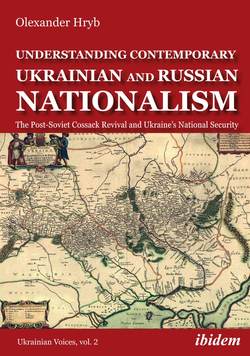Читать книгу Understanding Contemporary Ukrainian and Russian Nationalism - Olexander Hryb - Страница 6
ОглавлениеContents
1 Insecure Identities and the Nationalist Revival
1.1. Why is There not “a” Theory of Nationalism?
1.2. Nationalist Revival, National Identity and Security
2.1. Major Elements Within the Genesis of Nation, Ethnie, National and Ethnic Consciousness
2.1.1 “Nation”: Modernist vs. Primordialist Perspectives
2.1.2 Ethnic Community, Ethnie, Ethnos
2.1.3 National Consciousness as a Complex System of Beliefs
2.1.4 Ethnic Consciousness—Optional or Crucial?
2.2. Ethnicity and Its Place Within National Consciousness
2.2.1 Myths of National Consciousness or National Consciousness as a Myth?
2.2.2 Stereotypes and National Consciousness
3 Nationalism and Societal Security
3.1. Nationalism, War, and Security
3.2. Security Communities and Societal Security
3.3. The Security Community of EU-NATO and the Societal Security of Ukraine
3.1.2 Influence of the EU-NATO Security Community Expansion on Russian-Ukrainian Relations
4.1. The Heritage of Soviet Ethnography and the Revival of Ethno-Geopolitics in Russia
4.2. Ethno-Geopolitics of Putin’s Eurasianism
4.2.1 What is Putin’s Eurasianism?
4.2.2 Putin’s Nationalism: Known Knowns
4.2.3 Putin’s Nationalism: Known Unknowns
4.2.4 Revival of Political Eurasianism Ideology in Russia
4.2.5 New Eurasianism: Implications and Contradictions
4.2.6 Unknown Unknowns of Putin’s Eurasianism
4.3. The Cossack Revival in Russia
4.4. The Heritage of Soviet Ethnography and Ethno-Geopolitical Discourse in Ukraine
4.5. The Cossack Revival in Ukraine
5.1. Nationalism as a Modern Belief System
5.2. Nationalism, Federalism and Civil Society
Summary und Conclusions of the Book
Appendix 1: The Case Study of the Black Sea Cossack Revival
1.2. Phases of Fieldwork and of Fieldwork Methods Application
1.3. Evolution of Personal Identities—Shift Towards Cossack Identification
1.4. Black Sea Cossacks—Self-Image and Perception of Others
2.1. Description of the Two Cossack Movements
2.2. The Origin of Conflicting Interests
2.3. Self-Perception of Parties
